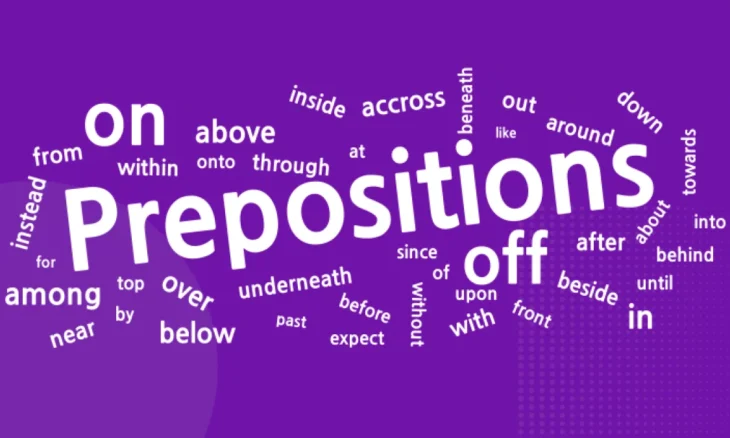
Last Updated on January 3, 2025 by Surender Kumar
Prepositions are essential in making our sentences clear and meaningful. They connect nouns or pronouns to other words, showing relationships in time, place, direction, and more. Mastering prepositions can make your writing more precise and engaging, whether you’re a student learning grammar or a teacher guiding others.
Table of Contents
What is a Preposition?
A preposition is a word that shows a relationship between a noun or pronoun and other parts of a sentence. Simply put, it helps explain where, when, or how something happens.
Examples:
- Pour the juice into the glass.
- We are going to Paris.
Types of Prepositions
There are three main types of prepositions. Each type serves a specific purpose:
- Preposition of Time
- Preposition of Place
- Preposition of Movement/Direction
1. Prepositions of Time
Prepositions of time help us talk about when something happens. They specify time periods, durations, or points in time.
Here are some commonly used prepositions of time with examples:
- On – Used for days and dates.
Example: We have a test on Monday. - Since – Indicates a specific point of time continuing until now.
Example: She has been studying since January. - During – Refers to the entire period of an event or time.
Example: I read three books during summer break.
2. Prepositions of Place
Prepositions of place show the location of something in relation to other objects.
Here are a few examples:
- Beside – Means “next to.”
Example: The dog is sitting beside the statue. - In front of – Indicates something that is opposite or facing forward.
Example: The car is parked in front of the house. - Under – Refers to something in a lower position.
Example: The keys are under the chair.
Quick Tip: To identify prepositions of place, think about where something is located in the scene you’re imagining.
3. Prepositions of Movement/Direction
Prepositions of movement or direction explain motion from one place to another or indicate a direction.
Some common examples include:
- Into – Describes movement inside something.
Example: The cat jumped into the box. - Across – Refers to going from one side to another.
Example: We walked across the road to reach the park.
These prepositions are useful when describing how things move or change positions.
Rules for Using Prepositions
Here are some essential rules to keep in mind while using prepositions:
- A preposition is usually placed before a noun or pronoun and must have an object.
- A preposition is never followed by a verb.
- Incorrect: She is good at play.
- Correct: She is good at playing.
- A preposition shows a relationship. It is perfectly acceptable to end a sentence with a preposition when it makes sense.
Examples:
- The baby fell off the bed.
- The scared child ran across the road.
- This is the book I was looking for.
Why Are Prepositions Important?
Prepositions bring clarity and detail to our sentences. They help us specify locations, times, directions, and relationships, making our communication precise and effective. Whether you’re writing essays, emails, or stories, mastering prepositions will elevate your grammar skills!
Conclusion
Prepositions are the unsung heroes of language, quietly connecting ideas and making sentences complete. By understanding their types, rules, and examples, you can use them effectively in your writing. Start practicing with the examples in this post, and soon, prepositions will become second nature to you.

I am a passionate blogger having 10 years of experience in blogging and digital marketing. I started List Absolute in 2018 to give my passion a live platform. I have also a good hand in writing unique and quality content. Here I contribute in my free time. Thanks for reading. Let me know if I can help you get your work done in a timely manner.
